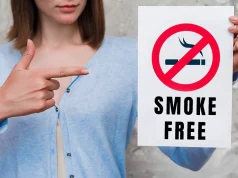A new study published in JAMA Network Online reports that youth vaping rates in the U.S. have declined during the COVID-19 pandemic.
Bonnie Halpern-Felsher, a psychologist and professor of pediatrics at Stanford University, in California, led the study.
Two-thirds of e-cigarette users report that they have cut back or quit vaping during the pandemic. 32 percent of e-cigarette users say that they quit vaping and 35 percent reported cutting back according to Halpern-Felsher’s survey.
“One of the main reasons they quit is that they were worried about lung health, and we think that’s important, that they thought they could hurt their lungs,” Halpern-Felsher said in a news report published by HealthDay News, via U.S. News & World Report. “This really provides an opportunity to talk about and provide education about lung health.”
According to the conclusions of the study, youth e-cigarette users have reported significant changes in their use trends of ENDS and at point-of-purchase.
“The US Food and Drug Administration and local policymakers may find these data useful to inform policies to prevent e-cigarette sales to underage youth,” the study notes.
This survey was done online with 2,167 youth and young adults who use e-cigarettes. 1,198 respondents reported that they have changed their amount of e-cigarette use, with 810 respondents reducing or completely quitting the use of e-cigarettes. E-cigarette access has also shifted to alternative retail stores and online points of sale.
“Reduced e-cigarette use or quitting was associated with adhering to shelter-in-place guidelines and was less likely if participants had used e-cigarettes more than 10 times or were nicotine dependent,” the study notes.
The study notes that individuals younger than 21 years of age who have reported e-cigarette use are accessing products from online and retail outlets due to the COVID-19 pandemic and the restrictions on personal movement.
Halpern-Felsher published another study earlier this year claiming that there is a direct connection between youth vaping and contracting COVID-19. She used an online survey as she did here, but the study was received terribly due to the misguided methodology.
The findings of this study have yet to be more widely reported and commented on by other academics and journalists.













Some of the decline in youth vaping could possibly be that the kids are at home with their parents, and under responsible supervision. The peer pressure is almost non-existent as is the sneak factor that is prevalent in schools.